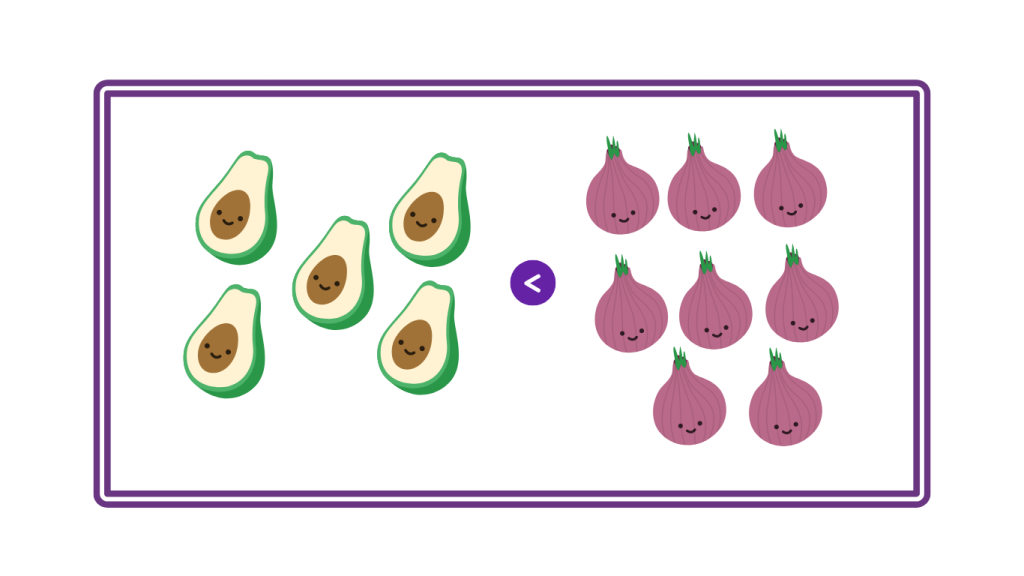Less Than Sign – Meaning with Examples
Table of Contents
Introduction
Less Than
In the realm of mathematics, the concept of “less than” plays a crucial role in comparing numbers and understanding their relative values. It is a fundamental concept that helps us determine the relationship between two numbers and is often represented by the symbol “<“. Let’s explore the significance of “less than” and its applications in mathematical comparisons.
Analogy of Definition
The Concept of Less Than
In mathematics, the term “less than” is used to compare two numbers and determine if one number is smaller than the other. It is represented by the symbol “<“, which points to the smaller number. For example, if we compare the numbers 5 and 8, we say “5 is less than 8”, which is denoted as 5 < 8.
Method
Comparing Numbers Using “Less Than”
When comparing numbers using the concept of “less than”, we look at the relative values of the numbers. If the number on the left is smaller than the number on the right, it is denoted by the symbol “<“. For example, 3 < 7 indicates that 3 is less than 7. On a number line, the smaller number is positioned to the left of the larger number.
Less Than on a Number Line
Let’s compare -4 and 4 step by step using a number line:
Draw the Number Line: We will begin by drawing a horizontal line representing the number line. We will place a zero at the center, with negative numbers to the left and positive numbers to the right.
Mark -4 and 4: Then, we will locate the points corresponding to -4 and 4 on the number line.
Identify Direction: We notice that -4 is to the left of 0, and 4 is to the right of 0.
Determine Less Than or Greater Than: Since numbers increase as we move to the right on the number line, 4 is greater than -4. Conversely, -4 is less than 4.
In conclusion, when comparing -4 and 4 on the number line, we find that 4 is greater than -4. This comparison highlights the concept that positive numbers are greater than negative numbers.

Comparison Symbols

Examples
Comparing Numbers Using “Less Than”:
Example 1: Comparing 3 and 6
In this example, we compare the numbers 3 and 6. Since 3 is smaller than 6, we use the “less than” symbol to denote the relationship between the two numbers. We can visualise by using apples and counting them as well.

Example 2: Comparing 4 and 6
Here, we compare the numbers 4 and 6. As 4 is less than 6, we represent the comparison using the “less than” symbol.

Example 3: 20 < 20
In this case, we compare the numbers 20 and 20. Since 20 is not less than 20, the “less than” symbol is not applicable in this scenario.

Quiz
Tips and Tricks
1.Visualize with a Number Line
Tip: Use a number line to visually represent numbers and their relationships. This can help learners understand the concept of “less than” by observing the positions of numbers relative to each other.
2.Directional Understanding
Tip: Emphasize that on a number line, numbers are arranged from left to right, with smaller numbers located to the left and larger numbers to the right. This directional understanding reinforces the idea that moving to the right indicates increasing values.
3.Comparison Strategy
Tip: Encourage learners to compare the positions of numbers on the number line. If a number is located to the left of another number, it is smaller and therefore “less than” the other number.
5.Real-World Examples
Tip: Provide real-world examples to illustrate the concept of “less than.” For instance, if someone has $5 and another person has $10, we can say that the first person has less money than the second person.
6.Practice Comparisons
Tip: Offer practice exercises where learners compare pairs of numbers and determine which is greater or lesser. This hands-on approach reinforces understanding and helps build confidence in applying the concept.
Real life application
Story: “The Math Competition with Less Than Sign”
In a math competition, students were given a series of challenges that required them to apply the concept of “less than” to solve problems in real-life scenarios.
Challenge 1: The Shopping Spree
The first challenge involved comparing the prices of different items at a store. Students had to determine which item was less expensive than the others by using the “less than” symbol to make comparisons. This helped them make informed decisions while shopping and manage their budget effectively.
Challenge 2: The Temperature Puzzle
In the next challenge, students were presented with temperature readings from different cities. By comparing the temperatures using the “less than” symbol, they were able to identify the cities with cooler climates and understand the variations in temperature across different locations.
Challenge 3: The Speed Race
The final challenge required students to analyze the speeds of different vehicles and determine which vehicles were traveling at speeds less than the others. This exercise helped them understand the concept of relative speed and make comparisons based on numerical values.
FAQ's
Like? Share it with your friends






